
Why is the FDR Drive Purple? 🎙️ New Podcast Episode Live
We get the definitive answer and bust long-held myths about the unusual color choice for NYC's FDR Drive!

In the latest episode of the Untapped New York Podcast, Michelle Young, author, journalist, and the founder of Untapped New York, tracks down the answer to her latest burning question about New York City: Why is the FDR Drive Purple? If you’ve been wondering or…have yet to notice, prepare to have your mind blown. A lot of myths abound, none of them true.
No, the New York State D.O.T. did not just happen to have a ton of extra purple paint. It's also not inspired by the color of the Public Designer Commissioner's tie. And the color choice wasn't an accident. But how it looks today is not how it was intended.
To get down to the root of it, Michelle went to the source and interviewed Gregg Pasquarelli, founding partner at ShoP Architects and Cathy Jones, project director at SHoP, who designed the Master Plan for the East River Waterfront. They have the definitive answer on the unusual pastel color choice and also what has gone wrong. The trio also spoke about all things FDR Drive—including all the films that have been shot there.
In 2004, SHoP designed the first iteration of the East River Waterfront Master Plan. At the time, just a few years after the 9/11 tragedy, lower Manhattan was struggling to recover. The area under the FDR Drive was "pretty derelict," reflects Jones on the podcast. "There [was] trash being stored under the FDR Drive. It was all parking. There are no planting. There were tons of chain link fence. [It was] not very hospitable or accessible, and pretty dark." Pasquarelli adds that there were up to six or seven layers of chain link fence. Cars were speeding, and there were heaps of construction debris and salt piles. It was also a popular film location shoot, seen in Annie Hall, The French Connection, Marathon Man, and other movies.
The East River Waterfront Master Plan and its subsequent update (also helmed by SHoP), along with the construction and revitalization of buildings around South Street Seaport, including Pier 17 and the Tin Building, have helped revitalize Lower Manhattan and its coastline. At the moment, a large revitalization project is underway along the lower portion of the FDR Drive—the subject of the urban studies studio Young teaches at Columbia University GSAPP—harkening back to the built conditions some twenty years ago.
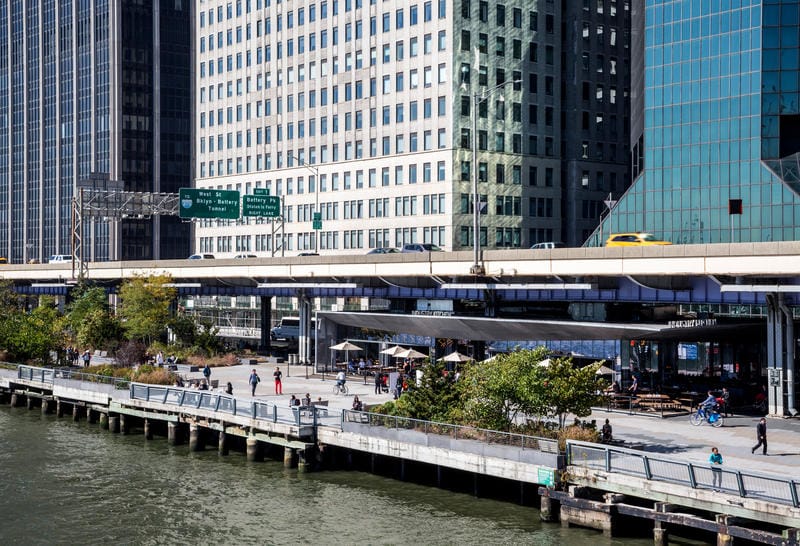
And the answer to why the FDR Drive is purple? SHoP did choose the color—it's called "Almost Purple" and there's a very particular design reason for it. But it's only supposed to be on the narrow girder, not on the whole structure and for such a long stretch of the elevated highway. It took days of testing to land on the exact right shade, with weigh-in by such esteemed urban designers and planners as then-NYC Planning Commissioner Amanda Burden and then-Deputy Mayor of Economic Development and Rebuilding Dan Doctoroff. The color chosen offered the most ideal glow on passersby without using large lighting infrastructure but still giving people a sense of safety while alongside the FDR Drive.
Gray would have made people look "ashen and sick," green would have cast an even worse color, and red would have made people "look a little angry," says Pasquarelli. And it had to be a color where the D.O.T. could still track rust on the structure, so nothing too deep in hue.
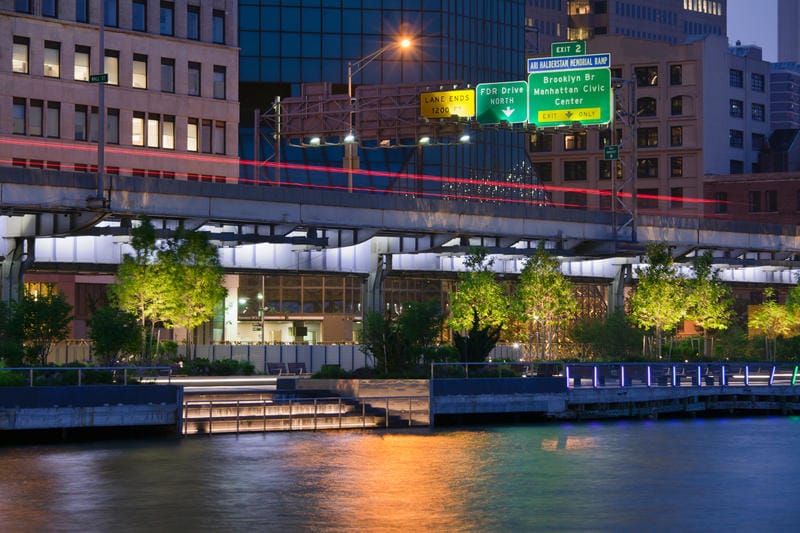
The design ethos was inspired by the iconic, romantic nature of the New York City waterfront. As Pasquarelli describes, "While it was dark down there, one of the things that was magical was that...it was one of the places where you didn't have a lot of glare, and so you could sort of see the stars. You could see the twinkling boats and the lights and the harbor working. There's a reason Woody Allen picks it as the place to kiss Annie Hall for the first time, right? It's incredibly romantic when you're there in a certain respect. So while we wanted to brighten up the whole esplanade, we didn't want to have giant poles with flood lights, and make it feel like a night baseball game...The whole idea of the park was to bring your light levels down and to really keep that subtlety of a nighttime stroll on a waterfront where there was enough light that it was safe, but it was really indirect light that kept that feeling. So the way we accomplished it was you could never see the source of a bulb, and that it always would bounce off another material in order to give a beautiful wash of light on the ground so you felt safe, but your eyes were really adjusted to the water."
So what happened? Why is the whole structure purple? Laughing, Pasquarelli tells us, "The internet is filled with falsehoods and ridiculous stories that we literally show each other and just start laughing."
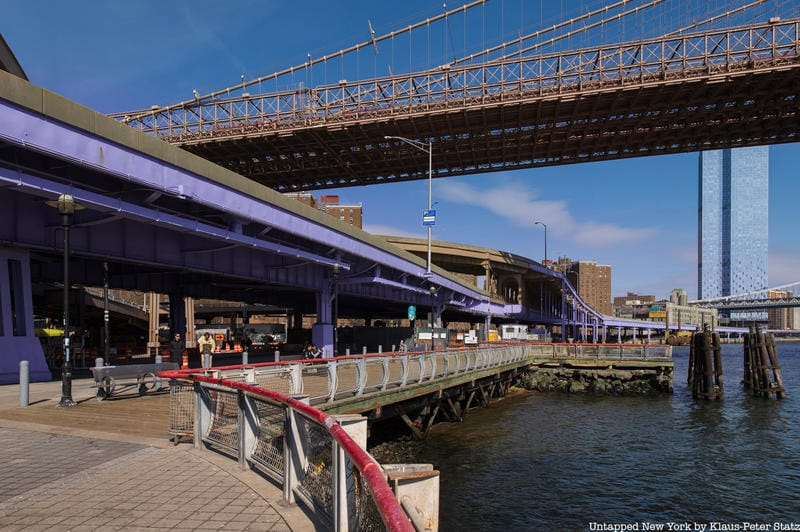
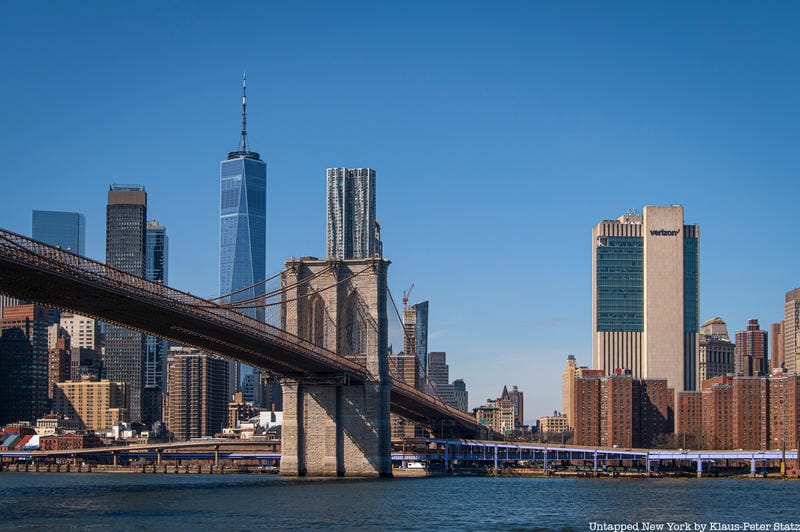
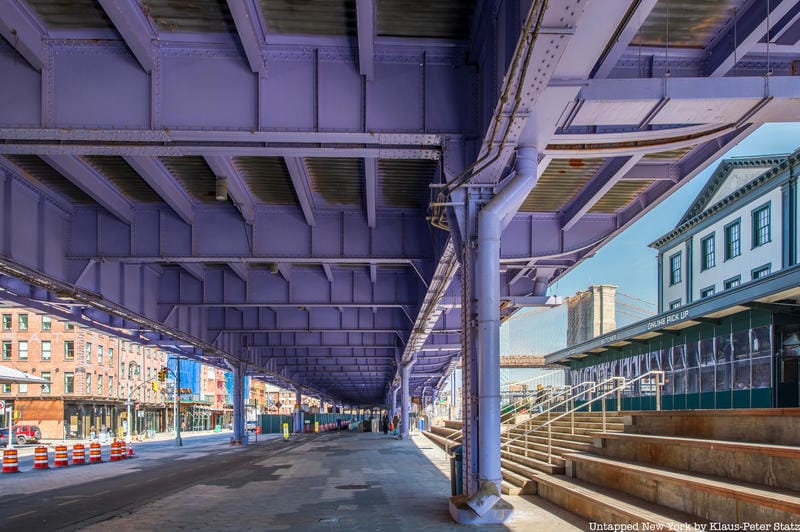
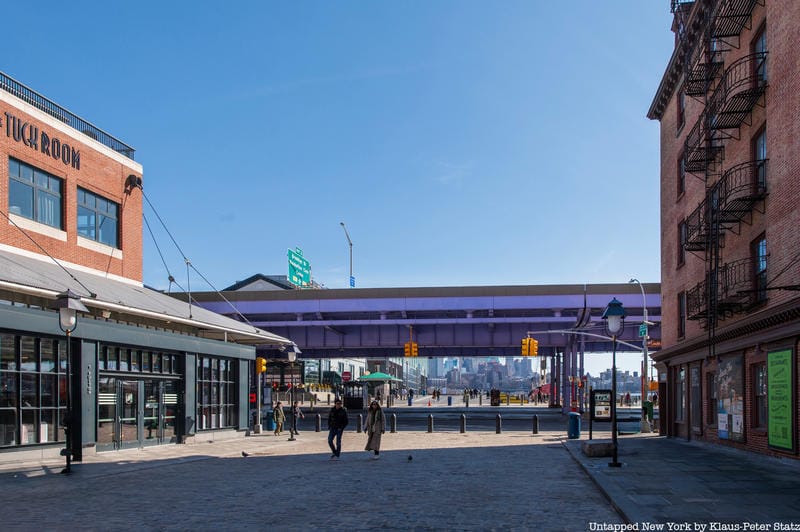
One day, Pasquarelli was in DUMBO having lunch and looked across the water in shock to see that the "Almost Purple" color was covering the whole FDR Drive. He called New York State DOT and asked why they did it. As Pasquarelli recalls, "They were like, 'Oh, we like the color purple. We thought you liked the color purple, so we painted the whole thing purple.' And we were like, no, no! Like we told you to wear a purple tie, and you are now wearing a purple suit, and like you now look like, Barney, like, this is ridiculous. And they were like, 'Oh, we didn't realize it.'" DOT offered to paint it back to gray, to which Pasquarelli answered, "Great, when? And they were like, on its next painting cycle in 25 years." You heard that right, the FDR Drive will be purple for another twenty years or so.
Listen to the latest episode of The Untapped New York Podcast for the whole conversation!
Next, did you know the FDR is partially made of rubble from WWII? Learn more!

